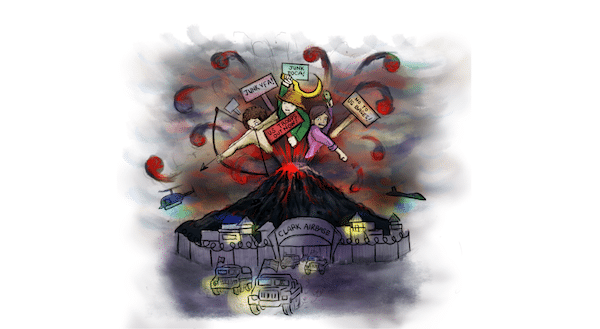In the coming days, the Filipino people will mark the historic termination of the Military Bases Agreement on September 16, 1991. That day, the Philippine Senate rejected a proposal to extend by ten years the stay of U.S. military bases in the country. Like an erupting volcano, 170,000 people took to the streets, bound by the patriotic aspiration to rid the country of the most repugnant symbol of U.S. domination and control of the Philippines. The resolution and the thrust of people’s powerful resistance gave victory to the decades-long struggle to oust American troops from Clark Air Base, Subic Naval Base and other U.S. military bases in the Philippines.
It is only fitting that the Filipino people recall that historic day in their struggle, and draw its profound relevance to the current period. Forgetting the people’s long history of patriotic struggle can only lead to the complete demise of Philippine freedom. The current struggle against new U.S. military bases, against lopsided military agreements and against continuing intervention of U.S. military domination is linked to the fight for genuine freedom.
Over the past two years, U.S. military bases in the Philippines have increased dramatically along with the steady rise in the presence of its forces in the country. At any moment, hundreds of American troopers are stationed in the country. They man at least 17 U.S. military bases, including nine under the framework of the Enhanced Defense Cooperation Agreement (EDCA), as well as other unpublicized military bases.
From time to time, several thousand American soldiers pour into the country to conduct successive war games in different parts of the country, for pretentious “humanitarian missions,” and for the rest and recreation of their troops. They arrive aboard large U.S. warships making port calls from patrol missions around the Philippines, the South China Sea to other parts of Asia and the Pacific.
Under the Visiting Forces Agreement, American troops move in and out of the country, and staying within or outside their military bases. They bring and deploy jet fighters, drones, missiles, bombs, and other powerful weapons. As in the past, U.S. imperialism is using the country as its bastion in the Asia-Pacific to engage in saber-rattling, show off its intimidating power, carry out intervention or aggression against weaker countries, and constantly prepare for war.
Aware of the deep sentiment and long history of the Filipino people’s resistance to U.S. intervention, they avoid calling their military bases in the Philippines “military bases,” rather “facilities,” “agreed locations” or such. Under the EDCA, these are built inside AFP camps which provide it with perimeter security and hide them from the public’s critical view. Whatever the case, it cannot be denied that these military bases are areas under the exclusive control of U.S. military forces, which even AFP generals are not allowed to enter or inspect (except when granted permission), something considered an insult even by some officers that possess a bit of patriotic feeling. They have no right to ensure that there is no violation of the Philippine constitutional prohibition of nuclear weapons.
U.S. officials repeatedly claim to be “friends and allies” of Filipino to obscure the fact that they have long denied the country’s freedom to determine its own destiny. Since occupying the Philippines, and even after “granting independence” in 1946, the U.S. has never relaxed its grip on the country. The U.S. rules the Philippines through a neocolonial state now headed by its obedient factotum Marcos. Its existence depends on the pillar of its armed forces that is under the firm control of the U.S.
Intensifying U.S. military presence and intervention is part of its strategy to impose its hegemony or power in the country and the region. The U.S. aims to protect its economic interests, especially control over trade, fields for dumping investment and loans, and sources of raw materials. The U.S. has become increasingly assertive in imposing its dominance in the Philippines and other Asian countries in the face of the economic crisis of the global capitalist system and its intensifying imperialist competition with China.
The U.S. used the Philippines and its interest in its exclusive economic zone to assert its presence and expansion of power in the South China Sea. It armed and supplied the Philippines with old naval vessels. Goaded by the U.S., the Philippines is actively deploying these to challenge China’s presence in the South China Sea. Rather than vigorously pushing for peaceful and diplomatic means as the primary means of resolving maritime disputes with China, Marcos has chosen to act as the U.S. forward deployed force to lock horns with China in the West Philippine Sea. China, the imperialist rival of the U.S., has confronted this situation with a far bigger force, heightening tensions and further raising the possibility of sparking an armed conflict with the U.S.
In chorus with U.S. officials, the puppet regime continues to make noise about China’s “threat,” with the shameless objective of pushing the idea that “we need help from the US” in order to “defend the independence” of the country under the Mutual Defense Treaty. This plot of the U.S.-Marcos regime must be exposed and rejected.
By looking back at history, the Filipino people must understand that never in history has an imperialist colonizer defended the freedom of the subjugated. Promoting Philippine freedom and independence depends on the Filipino people and their determination to liberate the country from the control, intervention and domination of U.S. imperialism and of the subservient ruling classes in the country.

